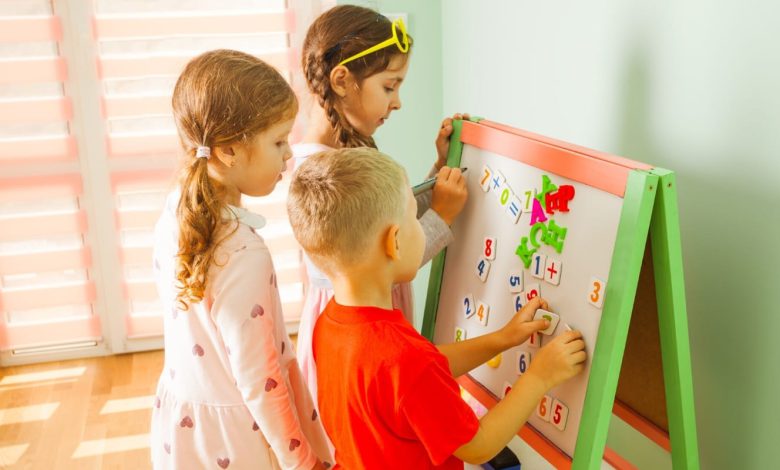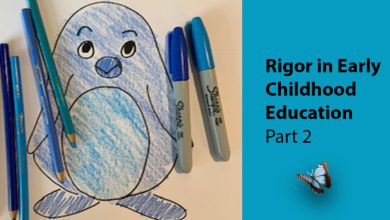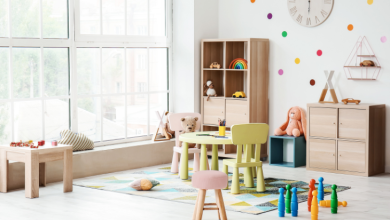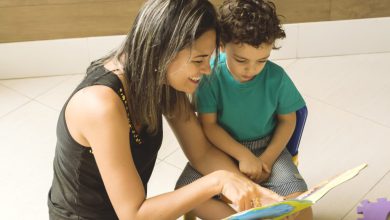The Best Math Activities for Preschoolers

The Best Math Activities for Preschoolers
If you’re the parent or caregiver of a preschooler, there’s no need to wait for kindergarten to help your child start learning about math. In fact, kids can learn about math at young ages. Toddlers can learn to count, while preschool-age children can do even more. Getting children started in math early will prepare them for their academic career.
According to the National Association for the Education of Young Children, children who are exposed to math concepts at home tend to fare better in school. Here, we’ll take a look at some of the easiest, most entertaining ways to help young children learn math skills at home.
Say Goodbye to Boring Worksheets
As children enter school, many of their math-focused activities often center on worksheets and memorization, but there are some other fun ways to help your kids learn math. Preschoolers are particularly receptive to abstract math concepts that can be incorporated in hands-on activities. Preschool-age children can learn about math through games based on learning patterns, sorting objects based on different characteristics, and counting objects. Math worksheets and math problems certainly have their place with older children, but preschoolers are easily distracted and still learning their numbers, so hands-on activities tend to work better.
Learning Patterns
Patterns are one of the easiest ways to reinforce basic math concepts among preschoolers and toddlers. Create patterns with a variety of educational tools such as blocks, crayons, and even plastic or magnetic letters.
For example, the most basic type of pattern activity involves ABAB patterns—for example, a repetition of green, yellow, green, yellow, or circle, triangle, circle, triangle. Games that involve identifying this simple pattern are a fun way to teach children about order and pattern recognition. Another fun way to teach children about patterns is to use everyday items such as clothing. If a child is wearing a striped shirt, point out that the shirt has one red stripe, one blue stripe, and one white stripe, and illustrate how the pattern repeats itself. Ask your child what they think will come next in the sequence and help reinforce this activity daily. See if your child can identify the pattern and have them explain it to you. You can also ask your child to create a pattern with any of the toys mentioned above.
Number Order
Putting things in order is another informal way to teach preschoolers about math. With simple things like balls or balloons, children can be taught how to put things in order, and ordering activities also help with counting. For example, in the balloon example, a parent can label several balloons 1 through 10 and have children help put the balloons in order based on what they know from learning to count. The parent can then take a few of the balloons away and ask the children which ones they think should be put where. Ask the child what is wrong with the sequence and what is missing. As children become more skilled at identifying patterns and number order, try switching it up and thinking of more complicated questions to ask. Challenging questions will encourage kids to think critically, which is an essential skill not only going into kindergarten but throughout childhood and into adulthood.
Classification Activities
Classifying is a way of grouping or sorting similar items, and this is the perfect activity for young children. Items can be sorted by their characteristics such as size or color; this makes a great activity for children who are used to playing with toys like crayons or building blocks. For preschoolers, this can also be an opportunity to teach them about shapes and colors. For example, you might ask your child to identify all the triangles in a set of toys and separate them from the square ones. The sorted shapes can be divided further by classifying each by color or size. For everyday items, children can also be taught the difference between characteristics such as soft versus hard, shiny versus dull, and rough versus smooth.
To take classification even further, help your child create a graph. After grouping a collection of items, count each item in each group. Then create a bar graph by listing the groups of objects on the bottom (for example, triangle blocks, square blocks, and circle blocks) and the number of each object on the side. This is a bit more advanced than simple counting or grouping, but it helps children make the connection between a group of items—for example, four triangle blocks—and a visual representation of this amount.
Get Started Early and Make It Fun
Parents and caregivers can reinforce key math concepts at home before a child even enters the classroom, which gives them an advantage as they head into school. Make use of the activities highlighted here to make learning about math fun and engaging, and encourage your child to use mathematical concepts in everyday activities. The skills learned from a strong math foundation cannot be underestimated, so it’s important to always look for new ways to challenge your child while keeping them engaged.
Want to learn how Little Sunshine’s Playhouse® prepares your child for success in math, read Preschool Math Comes to Life with Hands-On Learning and Fun.
If you’d like information about hands-on math lessons at Little Sunshine’s Playhouse and Preschool®, contact a location near you today!





